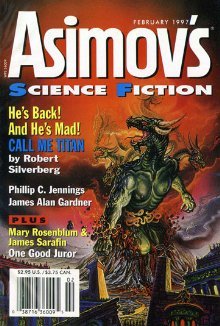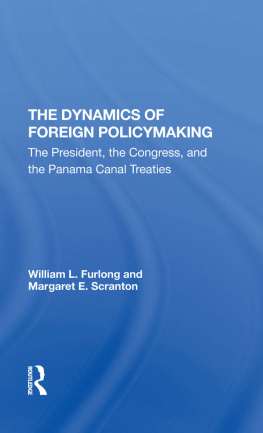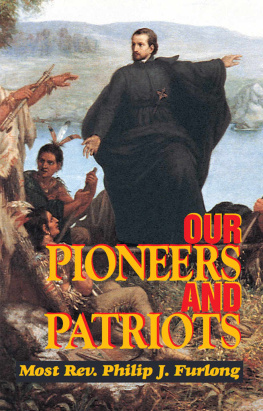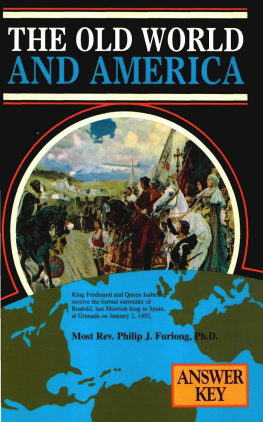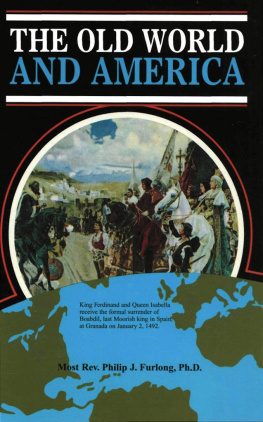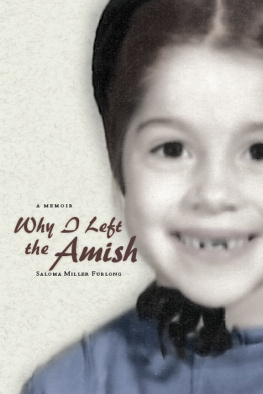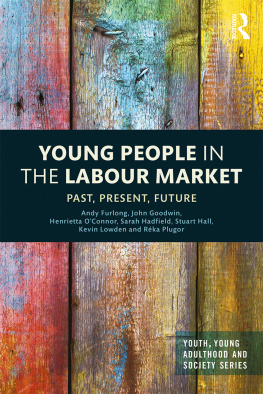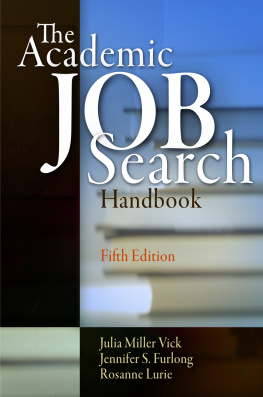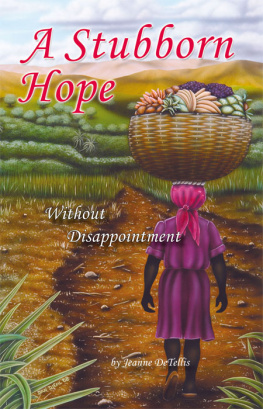Most Rev. Phillip J. Furlong - The Old World and America
Here you can read online Most Rev. Phillip J. Furlong - The Old World and America full text of the book (entire story) in english for free. Download pdf and epub, get meaning, cover and reviews about this ebook. year: 0, genre: Religion. Description of the work, (preface) as well as reviews are available. Best literature library LitArk.com created for fans of good reading and offers a wide selection of genres:
Romance novel
Science fiction
Adventure
Detective
Science
History
Home and family
Prose
Art
Politics
Computer
Non-fiction
Religion
Business
Children
Humor
Choose a favorite category and find really read worthwhile books. Enjoy immersion in the world of imagination, feel the emotions of the characters or learn something new for yourself, make an fascinating discovery.
- Book:The Old World and America
- Author:
- Genre:
- Year:0
- Rating:5 / 5
- Favourites:Add to favourites
- Your mark:
- 100
- 1
- 2
- 3
- 4
- 5
The Old World and America: summary, description and annotation
We offer to read an annotation, description, summary or preface (depends on what the author of the book "The Old World and America" wrote himself). If you haven't found the necessary information about the book — write in the comments, we will try to find it.
The Old World and America — read online for free the complete book (whole text) full work
Below is the text of the book, divided by pages. System saving the place of the last page read, allows you to conveniently read the book "The Old World and America" online for free, without having to search again every time where you left off. Put a bookmark, and you can go to the page where you finished reading at any time.
Font size:
Interval:
Bookmark:
The Old World and America
Answer Key
Most Rev. Philip J. Furlong, Ph.D.
Copyright 1998 by TAN Books and Publishers, Inc .
All rights reserved. No part of this book may be reproduced in any form or by any means, including by photocopying, recording, or electronic means, without written permission from the Publisher.
Library of Congress Catalog Card No.: 98-90276.
Cover illustration: King Ferdinand and Queen Isabella receive the formal surrender of Boabdil, last Moorish king in Spain, at Granada on January 2, 1492.
TAN Books
Charlotte, NC
www.TANBooks.com
1998
CONTENTS
A WORD TO THOSE WHO USE THIS BOOK
This A NSWER K EY to T HE O LD W ORLD AND A MERICA has been meticulously worked out by a home-schooling mother with an eye to facilitating actual use of the text and to minimizing any difficulties which may arise for those using the text.
In this A NSWER K EY we have provided Answers for the following exercises: O RAL D RILL, O BJECTIVE T ESTS, Q UESTIONS T HAT M AKE Y OU T HINK, I MPORTANT W ORDS (also called W ORD L IST ) and S TRANGE F ACTS (in the few chapters where this exercise occurs).
Throughout the A NSWER K EY we have striven as far as possible to give the Answers in the same words as those used by the text. Answers have often been given in brief phrases, rather than complete sentences. Even in cases where an Answer happens to be a sentence, we have sometimes omitted the normal punctuationa capital letter at the beginning and a period at the end.
While the Answers to the O RAL D RILLS and O BJECTIVE T ESTS are usually clear and obvious in the text, occasionally there is a Question in the Q UESTIONS T HAT M AKE Y OU T HINK or a word in the I MPORTANT W ORDS for which there is no Answer, or no clear answer, given in that particular chapteror sometimes, anywhere in the text. (Occasionally the answer is given in a later chapter.) Since the text was already published when the A NSWER K EY was made, it was not possible to "fix" these Questions in the text, so our solution has been to note any such difficulties in the A NSWER K EY.
We suggest that, when giving an assignment, the teacher or homeschooling parent scan the A NSWER K EY for the words answer not in text (or something similar) in italics and then simply tell the student to omit that particular Question, or to look for the Answer on the page cited, or to seek the Answer outside the text.
The teacher or homeschooling parent should not require that the student's answers to the Q UESTIONS T HAT M AKE Y OU T HINK match exactly the wording in the A NSWER K EY although we have tried to use the words of the text in these Answers. The Q UESTIONS T HAT M AKE Y OU T HINK sometimes present a challenge since the student will have to deduce or figure out an answer based on the explanation in the text. For example, the Answer to "What is a trade route?" (text, p. 276) is not spelled out in the text as a definition, but by reading the text and using his head the student will be able to come up with a good answer, for example: "a path travelled by merchants to obtain goods for their customers." Finding an Answer which is present but not spelled out word for word in the text will be excellent practice for the student in the skills of analysis and verbal expression. Note: The student should take note of paragraph headings when searching for answers.
The exercises entitled I MPORTANT W ORDS (also called W ORD L IST) sometimes include words that are not explained in the text. In this A NSWER K EY we have given the closest thing to a definition that can be found in the text, or at least something important that the text says about the particular term, even if this is not a definition. For example, the term "civilization" appears on the W ORD L IST on p. 10 of the text (see p. 2 of A NSWER K EY ); while the text discusses various aspects of civilization, it never says what civilization is . Thus in the A NSWER K EY we have tried to give the closest thing to a definition that can be found by reading the text and using one's head, i.e., "improvements in dwellings, clothing, agriculture and other things." (See pp. 8, 7).
We recommend that the teacher or homeschooling parent accept as a correct answer to the words in the I MPORTANT W ORDS ( W ORD L IST) exercises either a fact about the word which can be found in or deduced from the text (such as those given in the A NSWER K EY ) or a true definition, either from a dictionary or from the student's own knowledge.
Thus, for example, an acceptable answer for the term "woolcarder" (see A NSWER K EY , p. 55) would be "may have been Columbus' father's trade" (from pp. 278-9 of the text), even though this is not a definition of "woolcarder." Also acceptable would be a true definition, such as "one who prepares wool for spinning."
Another point: The reader will note that in the text of T HE O LD W ORLD AND A MERICA the chapters are not numbered as chapters, but rather as Units and "Parts." This is a minor inconvenience which we have tried to counter in the A NSWER K EY by marking page numbers very clearly.
With these minor provisos, then, we present this A NSWER K EY , confident that it will be a tremendous help to the parents, teachers and students who will use T HE O LD W ORLD AND A MERICA. We welcome any ideas for improvement of the A NSWER K EY, and we shall be happy to review them for possible use in any future editions.
The Publishers
Unit IThe Beginnings of Civilization

OBJECTIVE TESTS (p. 8)
TEST 1
1. "one from many"2. their ideas of self-government3. that Jesus Christ lived and died for us4. by many nations5. from the tools they left behind themTEST 2
1. God creates the world2. Jesus Christ is born3. Jesus Christ rises from the dead4. Columbus discovers America5. The English come to America6. The radio is inventedTEST 3
1. c) a great flood2. d) "one from many"3. b) the story of man and what he has doneSTRANGE FACTS (p. 9)
1. American Indians were living in America when it was discovered. All other Americans came from elsewhere.2. White people came to America from European countries. White Americans today either themselves came from Europe or are descendants of other Europeans.3. Each time a person writes the year, he proclaims the number of years that have elapsed since the birth of Our Lord.4. People who lived in caves left behind things that tell us how they lived. They also made drawings which help us to know how primitive people lived.QUESTIONS THAT MAKE YOU THINK (p. 9)
1. B.C. means "before Christ" and A.D. (Anno Domini) means "in the year of Our Lord" or after Our Lord's birth.2. because the present learns from the past3. History tells what man has done; a fairy tale is fiction.4. The motto of the United States is Latin: "E Pluribus Unum."5. agriculture, farmingboth mean growing plants or raising animals for a supply of food.6. A. We owe a debt to the English who brought to America certain important ideas about government and the law.B. We owe a debt to the Spaniards for bringing their religion, art, architecture and way of farming.7. Because many American people have come from the various European countries.8. When people came to America they brought with them gifts of useful knowledge from their native lands. (The European nations spent many centuries learning the things that their early explorers and colonists brought to our shores.)IMPORTANT WORDS (p. 10)
"one from many" E pluribus unum our country is one nation made from people of many nations
A.D. Anno Domini In the year of Our Lord
B.C. before Christ
Bible word of God (see next chapter, p. 20)
creation of the world was done by God
Next pageFont size:
Interval:
Bookmark:
Similar books «The Old World and America»
Look at similar books to The Old World and America. We have selected literature similar in name and meaning in the hope of providing readers with more options to find new, interesting, not yet read works.
Discussion, reviews of the book The Old World and America and just readers' own opinions. Leave your comments, write what you think about the work, its meaning or the main characters. Specify what exactly you liked and what you didn't like, and why you think so.


